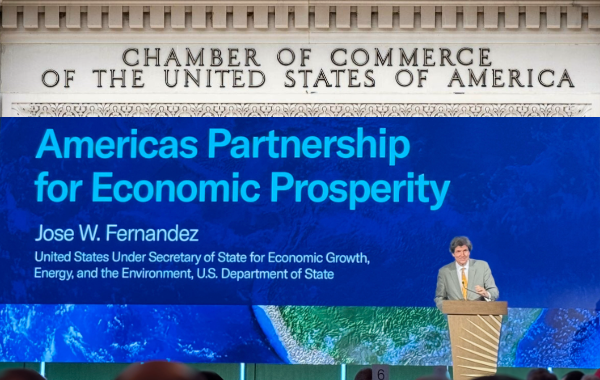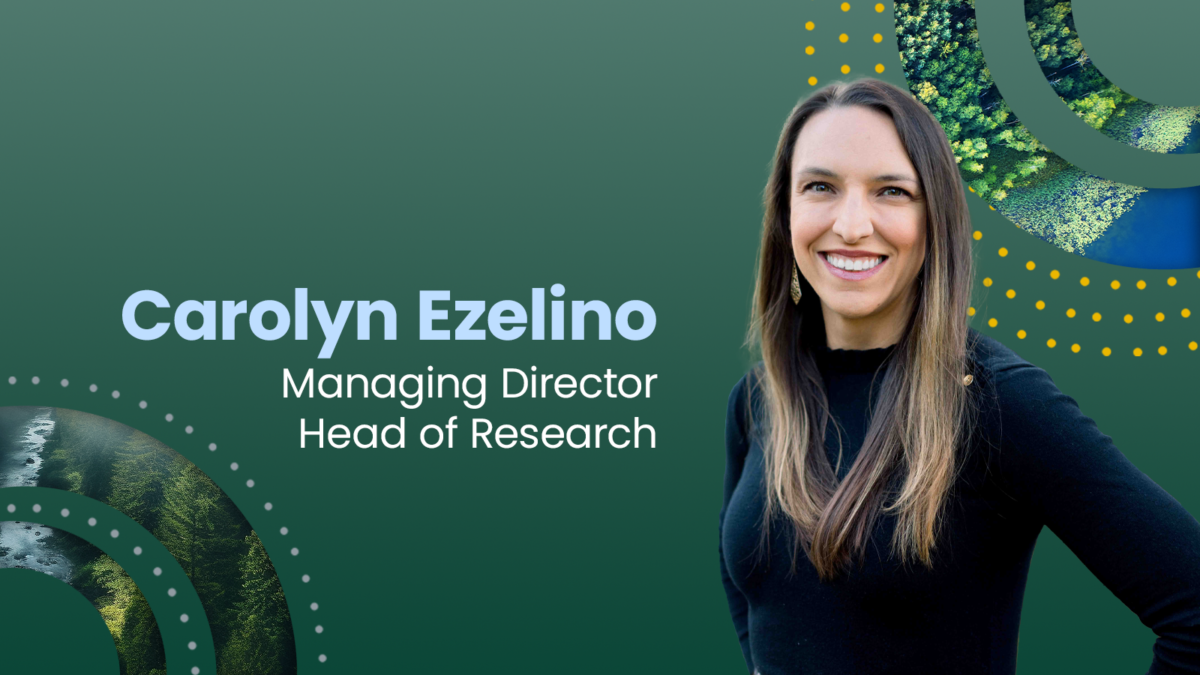
Lisa and Charly Kleissner are on a mission to change the way we invest (Photo credit: Sylvia Steininger)
Forbes, by Lauren Gensler
November 6, 2015
In 1999, Silicon Valley power couple Charly and Lisa Kleissner graduated from the tech IPO boom with a pile of cash and the desire to do some good.
Charly had arrived on the Silicon Valley scene in the ’80s from his native Austria, working alongside Steve Jobs at NeXT Computer and then moving on to software company and dotcom era darling Ariba. Lisa, who had worked in architecture, was an early employee at Apple.
When companies they had stock options in went public, they became millionaires overnight.
The couple would eventually find their way into impact investing, a buzzy new realm of investing that seeks a double bottom line of financial as well as social and environmental returns. It didn’t happen right away, though.
In 2000, the couple sat down with their financial advisor to devise a strategy for deploying their new wealth. ”I asked what I thought was a simple question and it turned out to be a longer journey,” says Lisa, recalling their conversation. She wanted to know what investment opportunities were available that would have a positive impact on the community and environment. “His response was he didn’t even know if that was possible,” she says.
For the Kleissners, it was important they use their wealth to make a difference in the world. They didn’t just want to make more money with their money (which is basically the whole point of traditional investing.) Instead, there was an allure to helping ambitious social entrepreneurs in their pursuit to develop clean energy tech, for instance, or assist those living in rural communities. Lisa, who grew up in Hawaii and worked in a family business, likes to say that for her the entrepreneurial seed was planted early on. They had both worked in the nation’s hotbed of entrepreneurial activity, too.
They ultimately sat in cash for almost two years, frustrated, while they stubbornly sought an answer to the question they posed to their financial advisor. (They’ll admit the silver lining was that they weathered the dot com bust better than most.)
The fact was, there weren’t a ton of options at the time. “Pretty much what you could find was negatively screened funds,” laments Lisa, referring to mutual funds that remove so-called sin stocks like tobacco companies. “We reluctantly agreed to go into them, and were in them for about a year, but the idea to extract negative impact from a portfolio is so distasteful, rather than having a positive impact.”
So they continued to scour for opportunities that would allow them to make a positive impact. As the years went by, and the big investment houses heard from more and more clients interested in this type of investing, options proliferated.
The Kleissners had figured out what they needed to live on (which amounted to just 30% of their assets) and donated the rest, including $10 million to their new family foundation, KL Felicitas Foundation. In 2004, they decided to go whole hog on impact investing. Instead of just paying out 5% of the foundation’s assets a year to operating charities (that’s what the law requires) they were going to make their philanthropy dollars do double duty by allocating their entire portfolio into investments that matched the values and purpose of the foundation.
With the help of an advisor specializing in impact investing, they’ve now transitioned 99.5% of the foundation’s portfolio into these types of investments. “We’re betting the farm,” says Lisa.

Impact investing has become a second act for the couple, who are convinced that people need to align their values with their wealth. This begins with leading by example. They’re trying to prove with their own portfolio that it’s possible to earn a healthy financial return and make a difference, and have been extremely transparent about their experience.
They’ve also provided a voice of encouragement for others. In 2010, they founded a networking group for impact investors called Toniic (an inside joke that plays on the name of industry group GIIN, an acronym for the Global Impact Investing Network). They’ve also started a group for those interested in committing 100% of their portfolio to impact investments like they have. Last year they spoke at some 32 events.
To be sure, they’re not on some spirited campaign to fix a specific global problem. “We aren’t targeting impact in a very narrow way,” says Lisa. “We’re not saying we want to impact the education of women in Sub-Saharan Africa.”
Instead, they’re on a mission to prove that impact investing is a viable option for real people. “It’s really about stress-testing the system to see how much impact we can get,” says Lisa. “At the end of the day, our job is to explore impact across all different types of asset classes.”
Their biggest allocation is in stocks (41%), where they’ve found plentiful options for investing in public companies they can get behind, whether because they have sustainable business practices, for instance, or are working to address a specific problem like climate change. They’re looking to decrease this allocation, though, Lisa says. They’ve also invested heavily in fixed income (29%) and private equity (23%). Even their cash (3%) is in liquid social investments like the Microvest Short Duration fund, which provides financial services to the low income, and Southern Bancorp, a U.S. development bank that helps revitalize rural communities.
When you’re putting all your money into impact investments, a properly diversified portfolio does not go out the window, as the Kleissners have demonstrated. “The laws of gravity are not suspended in impact investing,” says Antony Bugg-Levine, who convened the meeting that coined the term “impact investing” and now runs the Nonprofit Finance Fund.
The Kleissner’s returns have been competitive with traditional portfolios. In a 2013 report, they detailed returns of 2.56% (before fees) compared to a benchmark return of 2.38% over the same period dating back to 2006.
“From our perspective, this isn’t an and/or decision but an and/and decision,” says Raul Pomares, the founder of Sonen Capital and the Kleissner’s investment advisor.
The documented returns don’t include their investments in private companies, either directly or through a growing number of such funds, which are riskier but also have the most potential to deliver outsized returns. There are barriers to entry, starting with the requirement that you’re an accredited investor (defined by the SEC as those with at least $1 million in investable assets or income of $200,000 a year for an individual or $300,000 for a couple). Still, it can arguably be the best way to support a specific cause or company you care about, and be part of the tangible results it yields.
Most investors will find private equity and debt funds are the best means to this end, since experienced fund managers with time and expertise call the shots on which out of the gaggle of opportunities out there look the most promising.
Still, for those like the Kleissners who have the time and interest, some direct investments can be fun. For the last decade they’ve worked with social entrepreneurs by running accelerator programs that help prepare them for the future, and through this have found some gems.
Take Biolite, for instance. The Brookyln, NY-based company makes affordable clean energy stoves that double as charging stations for phones and other electronics, a line of which are used by people in emerging markets without good access to electricity. The Kleissners were the first investors in 2011 when they put up $77,000. The stove now ships to over 70 countries and helped 150,000 people in 2014, up from 31,000 in 2012.
“The company is growing and showing tremendous impact and financial success,” says Lisa, who notes the company recently did a Series B fundraising round and has distributed some profits. “It’s the most efficient product on the market.”
Another favorite investment is MA’O Organic Farms in Hawaii. MA’O is working to lessen the state’s dependence on imported food by hiring locals to help produce organic food. The Kleissners loaned MA’O $100,000 in 2014, and since MA’O won a 2013 accelerator challenge, their support also includes a $75,000 grant and time spent in an advisory role. “It’s a very patient capital play,” says Lisa.
This is true of a lot of investments in the private sphere. But, then again, good things take time.
See full article on Forbes.


